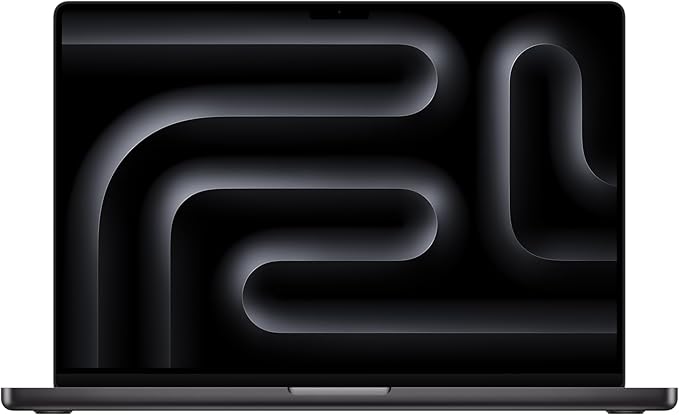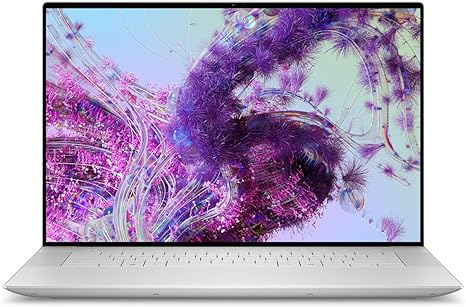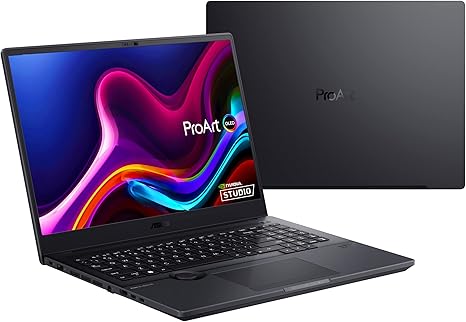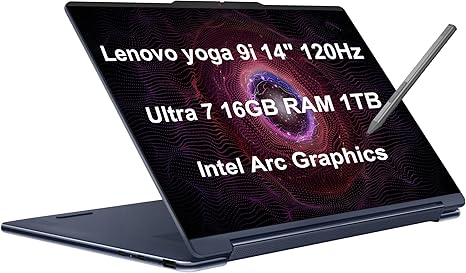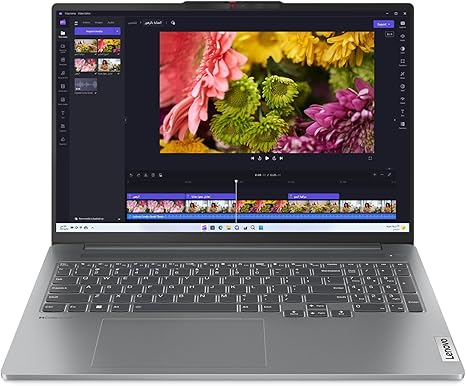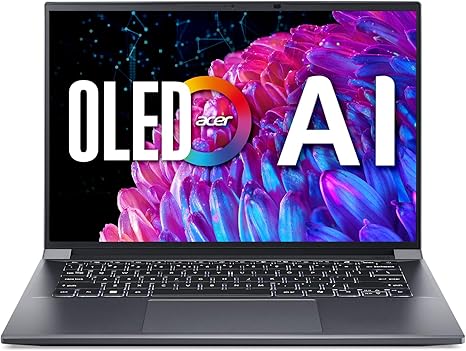When the perfect shot meets a smooth editing process, fantastic results follow! Having the right tools is key to bringing those images to life. For photographers who spend countless hours editing, the laptop chosen can truly shape the creative experience, making the difference between an efficient workflow and frustrating technical hurdles. Looking ahead to 2025, the technology powering our editing capabilities continues to advance, offering amazing performance for visual artists! Whether we’re preserving wedding memories or crafting content that needs pixel-perfect detail, our choice of laptop will either enhance or limit our creative vision.
Table of Contents
Choosing the Perfect Laptop for Photo Editing

The Importance of a Dedicated Photo Editing Laptop
While the camera captures the image, our laptop is where we refine and perfect it. A dedicated photo editing laptop is a valuable investment in our craft and the quality we deliver. Standard consumer laptops often lack the specific color accuracy, processing power, and display quality needed to truly see and enhance photographs effectively.
When working with professional editing software like Adobe Photoshop or Lightroom, the specifications really matter! Those RAW files from the latest photoshoot contain rich data that becomes fully visible only with capable hardware support. A great laptop for photo editing will reveal subtle color gradients, and shadow details, and highlight nuances that might otherwise be missed. We’re happy to see that today’s specialized editing laptops have impressively closed the gap with desktop workstations, offering genuine mobility without creative compromise. For photographers moving between client meetings, outdoor shoots, and the studio, this freedom is incredibly helpful!
Understanding the Needs: Photographers and Content Creators
Different creative professionals naturally have unique laptop requirements based on their specific workflows. Wedding photographers handling thousands of images from each event need robust storage solutions and efficient batch-processing capabilities. Content creators producing daily visual assets require smooth integration between multiple applications and quick export times.
The best laptop for photography editing provides sufficient RAM (we recommend at least 16GB, ideally 32GB) to handle large batches of high-resolution images without slowing down. This becomes particularly important when applying complex adjustments across multiple layers or generating previews for client review sessions!
Screen size presents an interesting consideration—larger displays offer more workspace for detailed editing but reduce portability. Many professionals find 15-16″ displays strike a great balance for image editing while remaining manageable for on-location work. Whatever the size, the best laptop for image editing must feature excellent color reproduction (100% sRGB coverage minimum, with AdobeRGB preferred for print work). For those of us balancing photo and video work, it’s wise to consider how the laptop handles both disciplines. Our workflow should guide our priorities when selecting the perfect creative companion for 2025 and beyond!
Critical Hardware Specifications for Optimal Performance

Selecting the best laptop for photo editing involves understanding which components directly impact our editing workflow. We can explore the laptop requirements for photo editing that truly matter, helping us make an informed decision aligned with both creative needs and budget.
Screen: Size, Resolution, and Color Accuracy
Why Screen Quality Matters
Our laptop screen acts as our digital canvas—the window through which we interpret light, color, and detail in every image. When evaluating photo editing laptop specs, screen quality should be a top priority! Poor color accuracy can lead to inconsistent edits that look dramatically different when viewed on other displays or in print.
Many photographers have faced challenges with client revisions because what looked perfect on their laptops appeared oversaturated or flat on the client’s device. We simply can’t properly edit what we can’t properly see! The display’s ability to reproduce colors faithfully determines whether those sunset oranges will translate correctly across platforms or appear muted in the final delivery. Professional photo editing benefits greatly from exceptional color accuracy, often measured by Delta E values. An industry benchmark for professional work is a Delta E value of less than 2, with values closer to 1 representing near-perfect color accuracy. Some top-tier displays, like those found on the MacBook Pro, achieve Delta E values below 0.2, providing outstanding color fidelity useful for professional work!
Recommended Screen Specifications
For serious photo editing work in 2025, we suggest looking for laptops featuring:
- Resolution: Minimum Full HD (1920×1080), with 4K (3840×2160) being very helpful for detailed work
- Color gamut: At least 100% sRGB coverage, with 95%+ Adobe RGB and P3 color spaces for professional work
- Panel technology: IPS or OLED panels for superior viewing angles and contrast
- Size: 15-16″ provides a good balance between workspace and portability
- Color depth: 10-bit color support (displaying over 1 billion colors) rather than standard 8-bit
- Brightness: At least 400 nits for everyday editing, while HDR workflows may require 600-1000 nits
- Contrast ratio: A minimum of 1000:1 for IPS panels, significantly higher for OLED panels
The difference between editing on a standard screen versus a color-accurate display is quite noticeable, much like the difference between using entry-level and professional camera gear—the potential for quality is simply higher!
Processor: Power and Efficiency
Balancing CPU Options: Intel vs. AMD vs. Apple
The processor acts as the brain of the laptop, handling the complex calculations required when applying filters, generating previews, and exporting final images. In 2025, professionals will have excellent options across Intel, AMD, and Apple platforms, each offering distinct advantages!
Intel’s latest Core Ultra processors perform very well in single-core tasks, which benefits certain editing operations in Adobe Photoshop where tasks execute sequentially. Their hybrid architecture combines performance and efficiency cores, allowing for better battery life during lighter editing tasks on location.
AMD’s processors typically offer strong multi-core performance at comparable price points. This provides advantages when batch-processing images or working with applications that efficiently utilize multiple cores. Their integrated graphics have also improved significantly, benefiting those who occasionally edit videos alongside photos!
Apple’s M-series chips (now evolved to the M4 lineup) provide exceptional performance-per-watt metrics. Their integrated GPUs handle many photo editing tasks remarkably well without the power consumption of dedicated graphics. Recent benchmarks show the M3 Max outperforming its predecessors significantly, with a weighted performance score of 44 in editing tasks and 18% faster importing/exporting of RAW files. (Note: M4 benchmarks continue this trend).
Recommended Processors for Professionals
For professional photo editing in 2025, we recommend considering:
- Intel: Core Ultra 7/9 processors
- AMD: Ryzen 7/9 series (7000 series or newer)
- Apple: M4 Pro/Max
The performance difference between these high-end processors and budget alternatives becomes particularly noticeable when working with large batch exports or applying processor-intensive features like AI-powered enhancements, panorama stitching, or focus stacking. Investing here can really speed things up!
Memory and Storage: What You Need to Know
Relevance of RAM in Photo Editing
RAM might be the most underappreciated component when discussing laptop specs for photo editing, yet it’s incredibly important! Insufficient memory creates a bottleneck that no processor can overcome. Modern photo editing involves handling multiple high-resolution files simultaneously, with each RAW image potentially consuming 50-100MB of RAM during editing.
When the system runs out of RAM, it begins using slower disk-based virtual memory, causing significant performance degradation. Watching progress bars slowly crawl across the screen when applying simple adjustments can quickly derail creative momentum and waste valuable time. It’s quite frustrating! For professional work in 2025, we consider 16GB the absolute minimum, with 32GB providing a much more comfortable editing experience for complex workflows. Power users handling multiple applications simultaneously or working with extremely high-resolution files should look into 64GB configurations where available.
SSD vs. HDD: Speed and Capacity
The days of compromising between speed and capacity are largely behind us in the professional space! Solid State Drives (SSDs) provide dramatically faster performance than traditional hard drives. Modern NVMe drives offer read/write speeds up to 7,000MB/s compared to roughly 150MB/s for HDDs – what a difference!
For optimal photo editing laptop specs, we recommend prioritizing:
- Primary drive: NVMe SSD with at least 1TB capacity for the system, applications, and current projects
- Secondary storage: Either additional internal SSD or external drives for archiving completed work
- Cloud integration: Smooth workflow integration with cloud storage for backup and collaboration
The speed improvement from SSDs isn’t merely about faster file access; it impacts every aspect of the editing experience, from application launch times to preview generation and filter applications. The productivity gained from SSDs definitely outweighs their additional cost in professional contexts!
Graphics Processing: Integrated vs. Dedicated GPUs
Graphics processing requirements for photo editing have evolved as software developers increasingly leverage GPU acceleration. While integrated graphics can handle basic editing tasks, dedicated GPUs provide significant advantages for complex operations.
Adobe’s Creative Cloud suite increasingly utilizes GPU acceleration for tasks like applying certain filters, generating previews, and handling complex layer operations. Other applications like Capture One and Affinity Photo similarly benefit from dedicated graphics hardware, particularly when working with large files or intricate adjustments.
When evaluating photo editing laptop specs, we should consider these GPU factors:
- VRAM capacity: 4GB minimum, 6-8GB preferred for handling multiple high-resolution images
- GPU architecture: Newer architectures offer better performance-per-watt and specific optimizations for creative applications
- Software compatibility: Verify that preferred editing software supports GPU acceleration for the chosen graphics card
The distinction between integrated and dedicated graphics becomes most apparent when applying GPU-accelerated effects, working with AI-enhanced tools, or editing high-resolution files with multiple adjustment layers. While photo editing is certainly possible with integrated graphics, dedicated GPUs provide headroom for complex operations without slowdowns, leading to a smoother experience!
Top Laptop Picks for Photo Editing in 2025
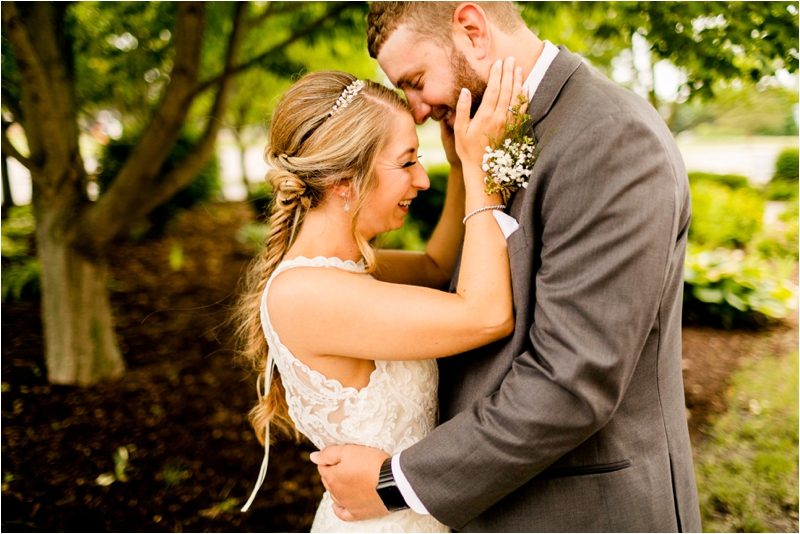
Finding the perfect balance between performance, display quality, and price can be challenging when searching for an ideal editing companion. This curated selection highlights some of the best laptops for photo editing in 2025, offering detailed specifications and insights to help find the perfect match for various creative needs and budgets.
Best Overall: High-End Laptops
For professional photographers and serious enthusiasts who require exceptional performance, color accuracy, and build quality, these premium options deliver outstanding results.
Apple MacBook Pro (16-inch, M4 Pro)
- Key Specifications:
- Processor: Apple M4 Pro (32-core CPU)
- RAM: 36GB unified memory
- Storage: 1TB SSD (configurable to 8TB)
- Display: 16.2-inch Liquid Retina XDR (3456 x 2234, 254 PPI)
- Color Gamut: 100% DCI-P3, Delta E < 0.2
- Graphics: Integrated 19-core GPU
- Battery Life: Up to 18 hours
- Weight: 4.7 pounds (2.13 kg)
- Ports: 3x Thunderbolt 4, HDMI, SD card reader, MagSafe
- Price Range: Starting at $2,499
- Performance Insights: This model demonstrates remarkable speed, efficiently handling tasks like batch processing large RAW galleries (e.g., 3,000+ images) much faster than previous generations. Its Liquid Retina XDR display offers exceptional color accuracy, providing confidence for delivery without constant cross-checking on external calibrated monitors. The M4 Pro chip handles complex edits with impressive efficiency, completing intensive tasks significantly faster than many comparable machines. The 16-inch model provides a great balance between screen real estate and portability, and the built-in SD card reader is a welcome convenience! The SD card reader is a particularly welcome feature for transferring images directly from camera cards. Battery performance is also a strong point, often supporting long 12-hour workdays of intensive editing on location without needing a charge.
Dell XPS 16 (2025)
- Key Specifications:
- Processor: Intel Core Ultra 9 185H
- RAM: 32GB DDR5 (upgradeable to 64GB)
- Storage: 2TB NVMe SSD
- Display: 16″ 4K+ OLED (3840 x 2400)
- Color Gamut: 100% DCI-P3, 100% Adobe RGB
- Graphics: NVIDIA GeForce RTX 4070
- Battery Life: Up to 22 hours for light tasks
- Weight: 4.8 pounds (2.18 kg)
- Ports: 3x Thunderbolt 4, USB-C, SD card reader
- Price Range: Starting at $2,299
- Performance Insights: The Dell XPS 16 serves well for tasks like client presentations, where its OLED display handles color reproduction effectively, especially for print preparation discussions. Users often comment on the vibrant yet accurate colors during reviews! A highlight is its port selection and expandability, offering both Thunderbolt 4 and USB-C alongside a full-size SD card reader. When working with tasks like portrait retouching involving multiple adjustment layers, the RTX 4070 GPU significantly accelerates performance in Photoshop compared to systems with integrated graphics, allowing for smooth navigation through complex composites. The premium CNC aluminum chassis offers excellent durability while maintaining a relatively compact footprint. While battery life under heavy editing load (around 8-10 hours typically) may not match the MacBook Pro, the ability to upgrade components like RAM and SSD gives the XPS 16 extended longevity that many photographers will appreciate!
Best Mid-Range Choices
Not everyone requires—or can budget for—the absolute top-tier machines. These mid-range options provide excellent performance for professional work while keeping costs more manageable.
ASUS ProArt StudioBook 16 OLED (2025)
- Key Specifications:
- Processor: AMD Ryzen 9 8000 series
- RAM: 32GB DDR5 (upgradeable to 64GB)
- Storage: 1TB NVMe SSD
- Display: 16″ 4K OLED (3840 x 2400)
- Color Gamut: 100% DCI-P3, Pantone Validated
- Graphics: NVIDIA RTX 4060
- Battery Life: Up to 10 hours
- Weight: 5.07 pounds (2.3 kg)
- Ports: 2x Thunderbolt 4, USB-A, HDMI, SD card reader
- Price Range: $1,999-$2,499
- Special Feature: ASUS Dial for precise control in Adobe applications
- Performance Insights: This StudioBook is often favored for on-location commercial work. The unique ASUS Dial, an on-device rotary control, proves quite useful for making fine adjustments to settings like exposure or brush sizes directly within Adobe applications. The OLED display’s color accuracy is exceptional, particularly helpful when evaluating white balance in challenging lighting conditions. The RTX 4060 GPU noticeably accelerates features like Lightroom’s AI masking, making complex selections much quicker! While it might run somewhat hotter and louder than some competitors during intensive tasks, its performance-to-price ratio makes it an excellent choice for photographers needing substantial power in a portable form. Battery life typically supports around 8 hours of active editing work.
Lenovo Yoga Book 9i (2025)
- Key Specifications:
- Processor: Intel Core Ultra 7 155H
- RAM: 16GB LPDDR5x
- Storage: 1TB PCIe SSD
- Display: Dual 13.3″ OLED displays (2.8K resolution each)
- Color Gamut: 100% DCI-P3, Delta E < 0.27
- Graphics: Intel Arc integrated graphics
- Battery Life: Up to 10 hours
- Weight: 3.04 pounds (1.38 kg)
- Ports: 3x Thunderbolt 4
- Price Range: $1,799-$2,099
- Special Feature: Dual-screen design for enhanced productivity
- Performance Insights: The Yoga Book 9i’s innovative dual-screen design can really enhance editing workflows, especially during travel. For instance, one screen can house Photoshop tools while editing occurs on the other, or thumbnails can be displayed on one screen with full previews on the second during culling – quite efficient! Both OLED panels deliver exceptional color accuracy with reliable factory calibration. The DisplayHDR True Black 500 certification allows for confident editing of high-dynamic-range images even in brighter environments. While the Intel Arc integrated graphics can’t match dedicated GPUs for highly complex operations, they handle most common photo editing tasks smoothly. Users report editing hundreds of images without significant slowdowns. Battery life reaches about 7 hours of continuous editing, which is suitable for mobile work!
Budget-Friendly Options
Finding affordable laptops for photo editing doesn’t necessarily mean settling for inadequate tools! These budget-conscious options deliver surprising capability for their price points while maintaining key features for photographers.
Lenovo IdeaPad Pro 5 (2025)
- Key Specifications:
- Processor: Intel Core Ultra 5 125H
- RAM: 16GB DDR5 (upgradeable to 32GB)
- Storage: 512GB NVMe SSD
- Display: 14″ 2.8K OLED (2880 x 1800)
- Color Gamut: 100% sRGB, 95% DCI-P3
- Graphics: Intel Arc integrated graphics
- Battery Life: Up to 12 hours
- Weight: 3.1 pounds (1.4 kg)
- Ports: 2x USB-C (Thunderbolt 4), 2x USB-A, HDMI
- Price Range: $999-$1,299
- Performance Insights: The IdeaPad Pro 5 offers surprising capability for its price point, making it great for travel or lighter workloads. Despite its modest cost, the OLED display’s color accuracy allows for confident editing for web use and even prints! The 16GB RAM configuration handles Lightroom catalog management and standard editing tasks well without noticeable delays. Limitations might appear when applying complex AI filters to very high-resolution images, which can cause some slowdown. For photographers beginning their journey or experienced professionals needing a capable secondary machine, the IdeaPad Pro 5 offers remarkable value! Its lightweight aluminum chassis feels more premium than its price suggests, making it ideal for working in varied environments.
Acer Swift X (2025)
- Key Specifications:
- Processor: AMD Ryzen 7 8840HS
- RAM: 16GB LPDDR5x
- Storage: 1TB NVMe SSD
- Display: 14.5″ IPS LCD (2560 x 1600)
- Color Gamut: 100% sRGB
- Graphics: NVIDIA RTX 3050 Ti
- Battery Life: Up to 9 hours
- Weight: 3.06 pounds (1.39 kg)
- Ports: 2x USB-C, 2x USB-A, HDMI
- Price Range: $899-$1,099
- Performance Insights: The Swift X represents excellent value in photo editing laptops. Its inclusion of an RTX 3050 Ti GPU—often rare in this price range—provides a noticeable boost when applying GPU-accelerated adjustments in software like Lightroom, speeding up quick turnaround workflows! While the IPS display doesn’t match OLED for contrast or wide-gamut color, it reliably covers 100% of the sRGB spectrum with good accuracy, making it perfectly suitable for web-focused work, social media deliverables, and online portfolios. What’s most impressive is how effectively the Swift X balances performance, weight, and battery life. At just over 3 pounds with nearly 9 hours of real-world battery performance, it’s an excellent companion for travel photographers needing to edit on the go!
Comparison Table: 2025 Photo Editing Laptops
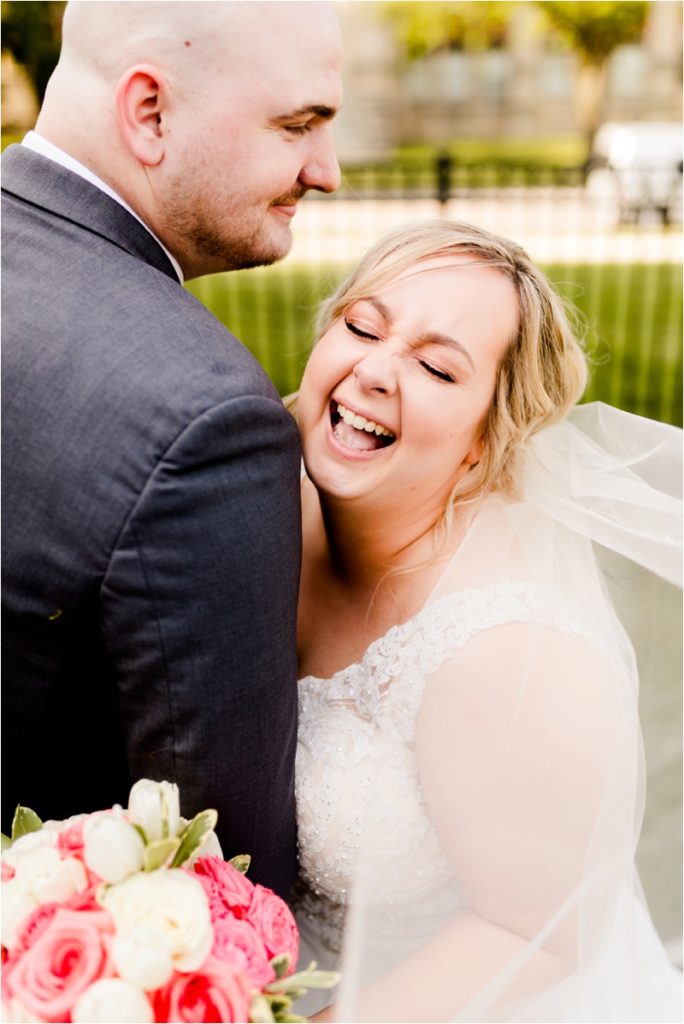
| Feature | MacBook Pro M4 | Dell XPS 16 | ASUS ProArt StudioBook | Lenovo Yoga Book 9i | Lenovo IdeaPad Pro 5 | Acer Swift X |
| Processor | M4 Pro (12-core) | Intel Core Ultra 9 | AMD Ryzen 9 8000 | Intel Core Ultra 7 | Intel Core Ultra 5 | AMD Ryzen 7 8840HS |
| Display | 16.2″ Liquid Retina XDR | 16″ 4K+ OLED | 16″ 4K OLED | Dual 13.3″ OLED | 14″ 2.8K OLED | 14.5″ IPS (2.5K) |
| Color Coverage | 100% DCI-P3 | 100% DCI-P3, 100% Adobe RGB | 100% DCI-P3 | 100% DCI-P3 | 100% sRGB, 95% DCI-P3 | 100% sRGB |
| RAM | 32GB unified | 32GB (up to 64GB) | 32GB (up to 64GB) | 16GB | 16GB (up to 32GB) | 16GB |
| Graphics | 19-core integrated | RTX 4070 | RTX 4060 | Intel Arc integrated | Intel Arc integrated | RTX 3050 Ti |
| Battery Life | 18 hours | 22 hours (light use) | 10 hours | 10 hours | 12 hours | 9 hours |
| Weight | 4.7 lbs | 4.8 lbs | 5.07 lbs | 3.04 lbs | 3.1 lbs | 3.06 lbs |
| Best For | Professional workflow, color accuracy | Windows power users, versatility | Creative professionals, precision control | Mobile editing, multitasking | Budget-conscious pros, travel | Value performance, portability |
| Price Range | $2,499+ | $2,299+ | $1,999+ | $1,799+ | $999+ | $899+ |
Future Trends and What to Look Forward To

The landscape of laptop technology for photo editing continues to evolve at an impressive pace! Looking ahead through 2025 and beyond reveals exciting innovations that promise to transform how we photographers interact with our digital tools. These advancements aim to address current limitations while opening new creative possibilities.
Emerging Technologies in Laptop Displays
Display technology is experiencing perhaps the most exciting evolution relevant to photographers! The visual canvas through which we interpret and manipulate images is becoming increasingly sophisticated, with several key developments on the horizon.
Tandem OLED technology represents a significant leap forward, utilizing dual layers of OLED pixels to achieve previously unseen brightness levels—up to 1600 nits—while maintaining energy efficiency. This brightness range is particularly valuable for HDR photo editing, allowing us to accurately visualize the full dynamic range of images even when working in bright environments!
Color accuracy is also improving dramatically. Next-generation displays increasingly support 100% coverage across multiple color spaces simultaneously—sRGB, Adobe RGB, and P3—eliminating traditional compromises. This universal color coverage means we can seamlessly transition between web and print work without changing devices. How convenient!
Perhaps most exciting for photographers who value both screen real estate and portability are the emerging expandable and rollable display technologies. These flexible displays could fundamentally change how we balance mobility and workspace needs, offering larger canvases that collapse into portable form factors. Touch and pen input are also becoming more sophisticated, with haptic feedback systems that can simulate different surface textures, potentially creating more intuitive control for precise adjustments!
Advancements in Processor and GPU Designs
Computing architecture is undergoing radical transformation as traditional CPU/GPU boundaries blur into more specialized systems optimized for creative workloads.
Neural processing units (NPUs) dedicated to AI tasks are becoming standard in professional laptops, dramatically accelerating AI-powered editing features like sky replacement or selective masking with minimal power consumption. This preserves battery life while delivering impressive real-time performance!
ARM-based architectures, like Apple’s M-series chips (now M4), are becoming increasingly prevalent across platforms. These designs offer superior performance-per-watt metrics, translating to longer battery life during extended editing sessions without sacrificing processing capability. The ability to edit hundreds of images on a single charge truly changes workflow possibilities for location and travel photographers! Memory architectures are also evolving toward unified systems, enabling seamless handling of massive image libraries without traditional data transfer bottlenecks.
Upcoming Models to Watch For
Several manufacturers have confirmed or strongly indicated new releases targeted at creative professionals:
- Apple MacBook Pro 14/16 (M4 Pro/Max): Expected to feature Thunderbolt 5 support (up to 120Gbps), potential nano-texture display options for glare reduction, and significant AI processing improvements via enhanced Neural Engines.
- Dell XPS 16 Plus: Rumored updates include Intel Core Ultra 9 processors, RTX 4070/4080 graphics options, and an enhanced 3.5K display with improved brightness (500+ nits) and color accuracy.
- ASUS ProArt Studiobook: Likely to feature AMD Ryzen AI 9 HX processors, enhanced ASUS Dial integration, and potentially massive 16TB SSD options for on-device storage.
- Lenovo Yoga Book 9i: The next generation is expected to refine the dual-screen concept with better software integration for creative workflows, enhanced stylus capabilities, and more powerful Intel Ultra processors.
These upcoming models represent the continued evolution of laptop technology tailored to photographers’ needs, focusing increasingly on AI acceleration, color-accurate displays, and workflow-specific features. It’s an exciting time for creative tech!
Buyer’s Guide: Making the Right Choice

Finding the perfect laptop for photo editing can feel overwhelming with so many options and technical specifications. This guide will help navigate the decision-making process with confidence, aiming to match an investment with both creative needs and practical constraints.
FAQs and Common Concerns
Certain questions arise frequently when photographers select editing machines. Here are answers to some common concerns:
- “How much RAM do we really need for photo editing?” While 8GB might suffice for basic tasks, 16GB is the practical minimum for serious work. If we regularly work with high-resolution files, panoramas, or complex layered documents, 32GB provides the headroom needed for smooth performance! RAM directly impacts how many images can be opened simultaneously and how responsive editing software will be.
- “Is color accuracy really worth paying extra for?” Absolutely! Color accuracy isn’t a luxury; it’s fundamental. Skimping on display quality can lead to edits looking entirely different when printed or viewed elsewhere. The frustration and potential client disappointment far outweigh the initial savings. We recommend looking for displays covering at least 100% sRGB, with Adobe RGB coverage being ideal for print work.
- “Should we prioritize CPU or GPU for photo editing?” For most photo editing tasks, CPU performance remains very important. However, modern editing software increasingly leverages GPU acceleration. The ideal balance depends on the workflow—primarily using Lightroom for cataloging and basic adjustments leans towards CPU speed. Frequently using Photoshop’s neural filters or other AI tools makes GPU performance more significant. For maximum versatility, the best laptop for photo editing and storage often features both a powerful CPU and at least a mid-range dedicated GPU.
- “How important is storage type and capacity?” Storage involves two key factors: speed and capacity. SSD storage is non-negotiable for the system drive and working files, dramatically improving load times and preview generation! For capacity, we suggest at least 1TB internal storage, supplemented with external drives for archiving. The best laptop for photo editing and storage will feature fast NVMe SSDs, providing much faster data access than older SATA SSDs.
- “Will this laptop remain relevant as editing software evolves?” Software requirements inevitably increase. Purchasing a laptop that slightly exceeds current needs provides longevity. We typically suggest selecting specifications that will remain viable for at least 3-4 years of software updates. Pay attention to non-upgradeable components like the CPU and display, as these largely determine the laptop’s effective lifespan for professional work.
Tips for Buying Refurbished Laptops
Refurbished laptops can offer exceptional value, particularly on tighter budgets! However, navigating this market requires careful consideration:
- Understand refurbishment tiers: There’s a difference between “factory refurbished” (restored by the manufacturer, often with warranties) and “seller refurbished” (potentially less rigorous testing). Factory refurbished units generally offer better reliability.
- Prioritize battery health: Laptop batteries have finite lifespans. Ask about battery cycle count or health percentage. A heavily degraded battery might need an immediate replacement, offsetting savings!
- Check for display issues: Look out for dead pixels, uneven backlighting, or color shifts. Request detailed condition info or inspect in person if possible.
- Verify software legitimacy: Make sure the operating system is properly licensed and activated to avoid future issues.
- Consider upgradeability: Some refurbished professional-grade laptops offer excellent potential for upgrading RAM or storage later. Research the specific model’s capabilities before buying.
Often, previous-generation professional models represent a sweet spot for refurbished photo editing laptops, frequently outperforming new consumer-grade machines at similar prices, especially regarding display quality and build durability!
Where to Buy and How to Get the Best Deals
Strategic shopping can yield significant savings without compromising on necessary features!
- Timing matters: Laptop prices often follow cycles. Sales events (Back-to-school, Black Friday/Cyber Monday) and new model releases can present discount opportunities. Tracking prices might save 15-30% if the purchase isn’t urgent.
- Consider last-generation flagships: Manufacturers often discount previous models when releasing updates. These usually offer most of the performance of the latest versions at substantial savings, particularly for configurations with upgraded RAM/SSDs.
- Explore educational pricing: Many manufacturers offer discounts to students and educators (sometimes extending to recent grads or parents). These can be especially generous on higher-end models.
- Look beyond big retailers: Specialized computer retailers sometimes offer better pricing on professional machines or custom configuration options unavailable elsewhere.
- Consider certified pre-owned programs: Manufacturer programs (like Apple’s Certified Refurbished) offer like-new products with full warranties at discounts (often 15-20%).
- Negotiate bundle deals: When buying from physical retailers, inquire about bundles including accessories like calibration tools, external drives, or extended warranties, especially with higher-end purchases.
When searching for the best laptop for photo editing, the right investment balances immediate needs with future-proofing. By understanding the requirements for our specific workflow, researching thoroughly, and shopping strategically, we can find a machine that will serve our creative vision well for years to come!
Affiliate Disclosure: Some links in this post are affiliate links, meaning we may earn a commission if you make a purchase through our links, at no extra cost to you. As wedding photographers ourselves, we only recommend gear we’ve thoroughly researched or would use in our own business. Your support helps us continue creating valuable content for the photography community.
